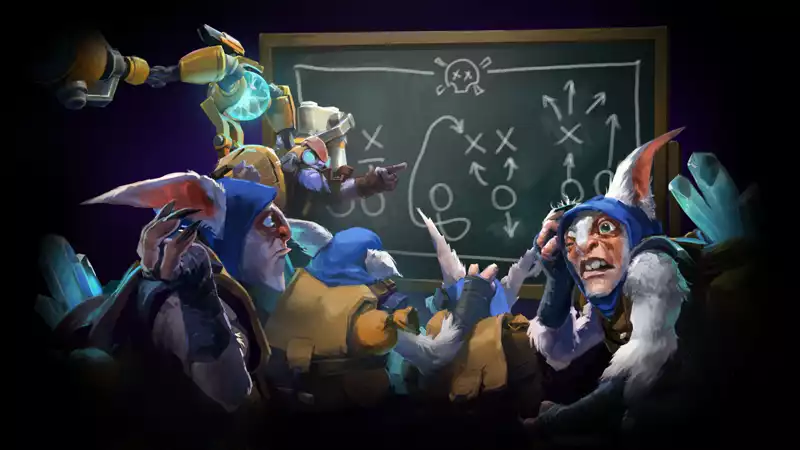Valve continues to show progress on its once-popular card game Artifact, which was an "interesting failure," according to Gabe Newell. In his latest deep dive, Valve's Eric Tams shows off how deployments have changed.
Artifact's MOBA-like three-lane system is maintained, which makes sense given that it is one of the main things that sets it apart from many competing card games. However, each lane has five slots, and no unlimited number of units can be placed there. The slots are fixed, so adding a new unit to the board does not move the others.
While the original system placed the first set of heroes and creeps randomly, the new system removes the RNG and gives some control back to the player. Before each round, proximity creeps are placed in the first available slot in each lane from left to right, after which hero placement can begin. These cards are placed in three stages in the first round, each focusing on a different lane.
In the first stage, both players place their first hero in one of the three central slots, and these choices are revealed simultaneously. Thereafter, the expansion out of the lane continues. One player puts his hero in lane 1, while his opponent puts his hero in lane 3. Tams warns, "This hero will be the most vulnerable, as it will be handled with full knowledge by the enemy." In the final phase of the round, the hero is placed in the remaining lanes.
This structure is discarded in other rounds, allowing both players to place cards wherever they wish. Tams also clarified some rules regarding card placement. If a hero is placed on top of another hero, the old hero is returned to the hand and can be placed on the next turn. However, if you place it on top of a creep, the creep is destroyed. On the other hand, if you play a creep on top of a unit, the unit is destroyed. You can also choose where to place creeps down to the slot, giving you more control over where to place creeps.
Finally, armor now moves differently than in the original version, and tower health is now dependent on the game mode. How these changes will affect the revamped game has yet to be explained, but expect more updates on how Valve is overhauling Artifact in the future.
It is difficult to determine from the comments how the community is embracing these changes. At least the elimination of the RNG seems to be working well, but many have expressed concern about the limited number of slots in each lane.
Valve is apparently still scrutinizing the feedback from the last update, but if you have any thoughts on this update, please reach out to the studio.


Comments